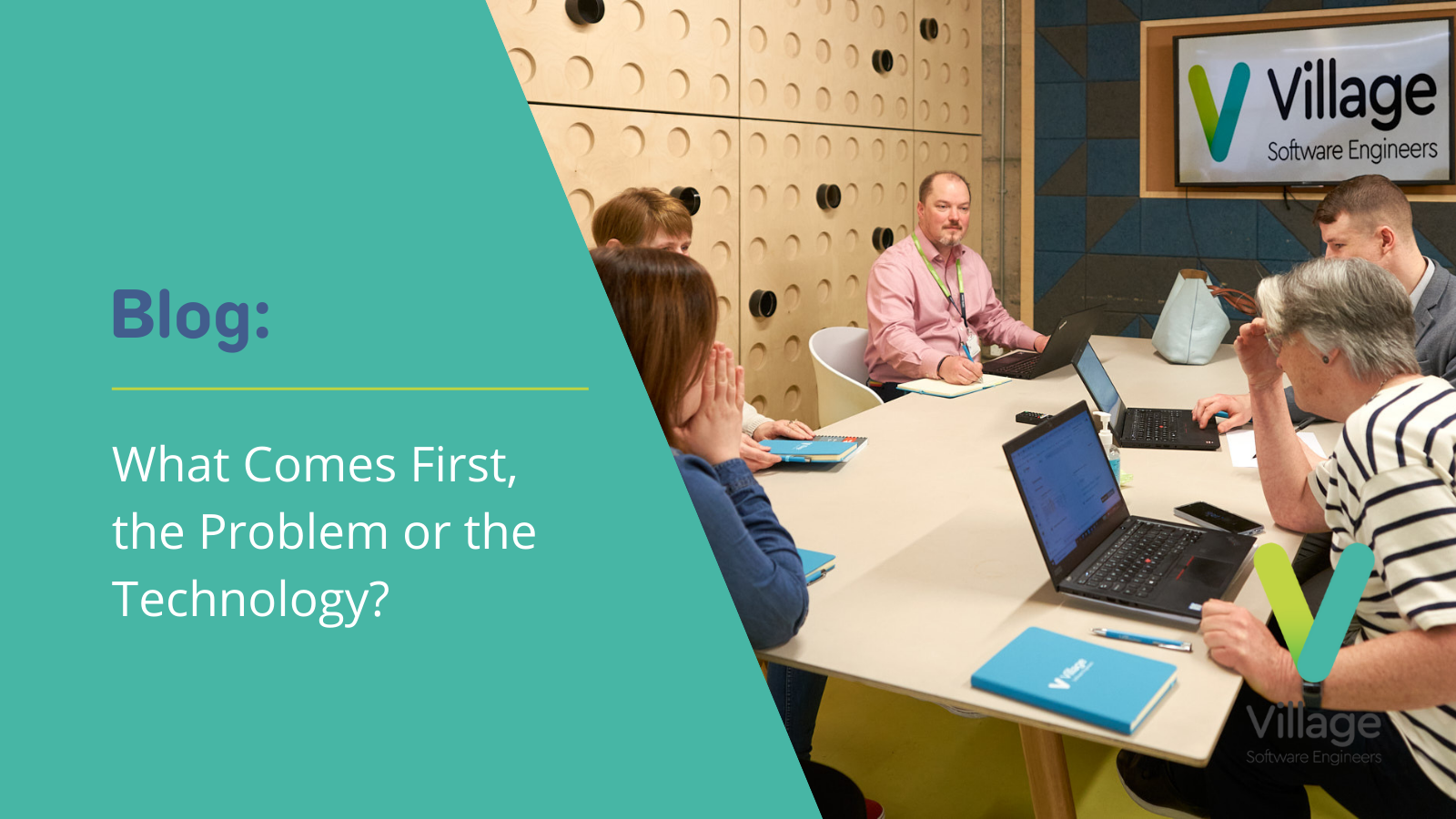What comes first: the problem or the technology?
Date: Thursday, June 30, 2022
In the 2020 State of Digital Transformation report, respondents shared mistakes they made with selecting the wrong tech to solve their problems. Among the biggest regrets?
- Not putting in the right strategy
- Not being 100% sure on tech selection
- Missed business unit opportunities
- Chasing too many priorities at once
Sadly, we see this often. The tech landscape is vast, complex and alluring. It can be tempting to grab the first tool that catches your attention, only to discover that it may not be able to solve the issues you're trying to fix.
Is your business putting the cart before the horse on tech selection? Let’s take a look.
Build it and they will (not) come
Technology is like any other business asset – it has a job to do. There are specific, real-world problems that should be solved, and things that should happen, as a result of the technology solution you implement. Figuring out what those things are is the acid test for whether you buy this piece of technology, that piece of technology, or no technology at all.
In other words, the problem must come before the solution. This is not the Field of Dreams – you can’t simply put effort into choosing a tech solution and have it magically succeed. Going full steam ahead with a technology that doesn’t do what you need it to do will simply add another layer of complexity and friction to your tech stack and workflows, when what you actually want to achieve is greater efficiency.
But it worked when we chose our ERP system…
When large businesses are choosing a new ERP system, the decision usually comes down to SAP versus Oracle. It’s fair to say that in this scenario, you will be putting the tech decision first – and that’s okay. The decision to invest in an ERP is really a decision to kiss goodbye to spreadsheets and optimise your business performance. Both SAP and Oracle include ‘best practice’ business processes as default, so reengineering your workflows to fit just makes sense, as it makes sure you’re getting the best configurations and not reinventing the wheel.
For everything else though, this ‘solution first’ approach is backwards. You might be persuaded by a sales pitch that Power BI is better than Tableau, or you might decide to go with the product that’s a bit cheaper. The tool itself may be feature-rich and excellent. Yet, the greatest technology in the world will only ever deliver mediocre results if it doesn’t do what you need it to do in your business.
Here’s a startling statistic: enterprise-targeted SaaS companies lose 10% of their customers every year. This figure rises to between 30% and 50% in the SMB SaaS space, according to this article in CMS Wire. This is US data but – yikes. With churn rates like this, it’s fairly clear that a lot of people are buying tech that is failing to deliver actual value for the business.
Turning the decision pyramid on its head
Let’s talk about the NHS Trust that went out to tender for a new data warehouse. The client wanted to integrate data from 19 different systems across pathology, radiology, patient administration and so on, and automate the process of submitting statutory returns to NHS England. This is exactly what the data warehouse achieved. Yet, at launch, one of the Hospital Clinicians said, “this doesn’t give me anything that moves me forward at all. It may benefit the finance and information teams who are making the statutory returns, but it doesn’t help me and my team at all. How come no one spoke to me before they designed the data warehouse and agreed the potential outputs?”
Why indeed?
As with many public sector buying decisions, a project can be led too much by the procurement process that is at arm’s length to the people managing the day-to-day business functions. The technology solution needed to power the entire business should not simply be an item to purchase based on a functional spec in isolation. Yes, we need the probity of good procurement. But we must also purchase a product that delivers benefits across the business based on the requirements gleaned from the very people “at the coal face.”
Even if your business does not have a procurement team, decision makers will often be two or three levels of management removed from the user. That’s why, for all our clients, we develop a matrix of what everyone wants and needs and build a solution that meets all these requirements. This typically involves interviewing and surveying potential users across the business or even shadowing them to understand their process, activities, behaviours and acute pain points. This allows us to define:
- THE WHY: Why are we doing this project? What benefits do we need to come? What should it look like if the technology is working beautifully? What happens if we do nothing?
- THE WHO: Who is going to use the tech solution, both in terms of the role and specific people? Who is going to manage, maintain and govern it?
- THE WHAT: What do users need from the solution? What are their problems, challenges and workflow inefficiencies? Have these requirements been incorporated into the scope of requirements?
- THE WHEN: What’s a realistic timescale?
- THE HOW MUCH: What’s a reasonable budget based on benefits, value and ROI?
This approach worked incredibly well for our client, Rutland Cycling. Rutland wanted to ditch the spreadsheets and siloed data sources and compile information from right across the business in order to optimise all routes to market. We looked at all of the client’s processes, workflows, customers, users and sales channels – shops, online, telesales, website visit optimisation – to see what was turning into revenue, what information decision makers needed to see, where the roadblocks were, and so on.
The result was a clear picture of ‘success’ that was driving the decision to buy. From there, it was much easier to source the technology that turned the vision into reality – and to do so as part of a coherent plan, considering all of the client’s requirements, so that we “solved for the whole” of the business to enable growth. Don’t skip the needs assessment!
Final words
Too many businesses make the mistake of choosing the technology before they’ve identified the core business problem, which is a huge mistake. At best, you’ll make a wasted investment. At worst, you’ll create more problems for your business than you solve.
Putting the problem before the solution is the only way to de-risk your tech investment. Let's focus on what you need to fix even without technology.
Our specialists at Village Software will work with you to help identify the actual problems your organisation needs to address which involves speaking to users and stakeholders across the business. We will then work with you to develop a technology roadmap which is designed around solving your problems and achieving your wider business objectives.
Feel free to get in touch for an exploratory conversation and some initial advice.
villagesoftware.co.uk info@villagesoftware.co.uk +44 (0)151 7097728 The Tempest 12 Tithebarn Street Liverpool L2 2DT
 About Us
About Us Services
Services Sectors
Sectors Case Studies
Case Studies Blog
Blog Contact
Contact



